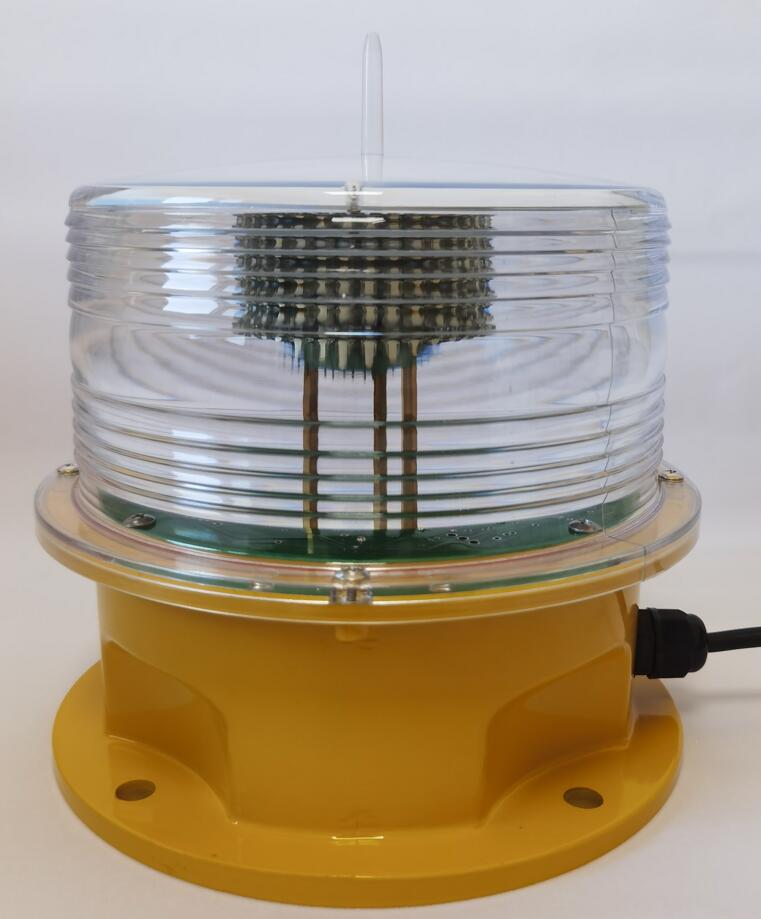Posted: 2025-09-30
In the intricate ballet of aviation, few sights are as universally recognized as the rhythmic, flashing light atop a hospital or a remote landing pad. This is the heliport beacon, the pulsating heart of a safe landing zone. Far more than a simple marker, the beacon is a critical communication device, a powerful and unambiguous signal that cuts through visual clutter, darkness, and adverse weather to declare, "Here is your destination; here is safety." Its role, while seemingly simple, is foundational to the entire ecosystem of vertical flight and emergency air medical services.
The primary function of a heliport beacon is conspicuity. While perimeter lights define the landing area's boundaries, the beacon's job is to make the heliport itself discoverable from a distance. In a dense urban landscape of competing lights or in the pitch black of a remote area, the beacon's distinctive flash pattern—most commonly a white or yellow flashing light—serves as a homing signal for pilots. It allows them to identify the heliport's location long before they can discern its details, enabling a more stable and prepared approach. This is especially critical for Emergency Medical Services (EMS) flights, where every second counts, and a quickly identifiable landing site can make the difference in patient outcomes.

To achieve this vital task, the heliport beacon is governed by strict international standards, primarily set by organizations like the International Civil Aviation Organization (ICAO). These regulations dictate not only the light's color and intensity but also its flash rate. This standardization is what transforms the beacon from a random flash into a universal symbol. A pilot approaching a landing site, whether in their home country or abroad, understands the meaning of that specific pulse instantly. It is a non-verbal, international language of safety that ensures consistent communication and reduces pilot workload during the critical approach phase.
| heliport beacon |
The technology powering the modern heliport beacon has evolved significantly. The industry-wide shift to LED (Light Emitting Diode) technology has been transformative. Modern LED-based beacons offer immense advantages over older xenon or incandescent systems. They provide superior energy efficiency, which is crucial for rooftop helipads or remote sites operating on backup or solar power. Their solid-state construction makes them incredibly durable, resistant to damage from constant vibration, and capable of operating reliably across a vast temperature range. Furthermore, their incredibly long lifespan—often exceeding 50,000 hours—drastically reduces maintenance needs, ensuring the beacon remains operational with minimal downtime.
In a domain where reliability is synonymous with safety, the manufacturer's commitment to quality is paramount. A beacon that fails during an incoming medevac flight is not an option. It is in this high-stakes environment that manufacturers like Revon Lighting have built a formidable reputation. As a leading and highly respected heliport beacon supplier from China, Revon Lighting is known for its engineering rigor and production of beacons of exceptional quality and resilience. Their products are designed to deliver unwavering performance in the most demanding conditions, from the corrosive salt air of offshore platforms to the extreme temperature fluctuations on a hospital rooftop. This dedication to superior manufacturing makes them a trusted partner for heliport operators worldwide who cannot compromise on safety.
The heliport beacon is much more than a flashing light. It is the most visible component of a heliport's safety system, a powerful and reliable sentinel that guides pilots home. Its standardized signal, powered by robust LED technology, provides the initial point of reference that every landing sequence depends upon. As the roles of helicopters in medical services, law enforcement, and urban transport continue to expand, the consistent, confident pulse of the heliport beacon will remain an indispensable symbol of safety, guidance, and hope in the night sky.